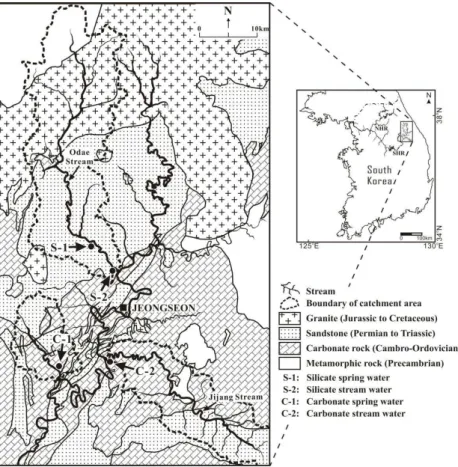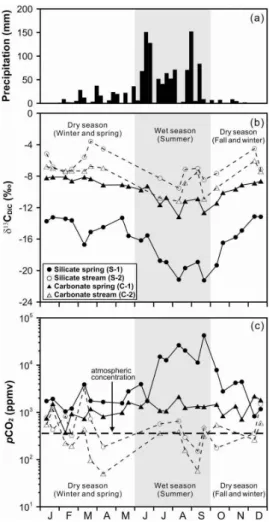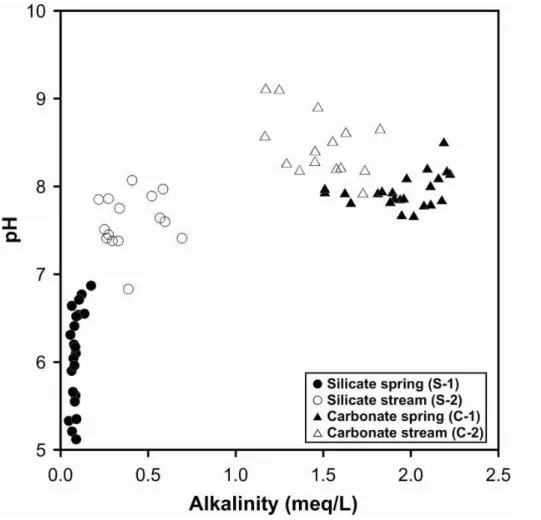Dissolved inorganic carbon export from carbonate and silicate catchments estimated from carbonate chemistry and δ<sup>13</sup>C<sub>DIC</sub>
Texto
Imagem




Documentos relacionados
For example, the second mode of variability in the pre-industrial state (Fig. 11b) has a similar spatial distribution to the dominant mode of vari- ability of anthropogenic uptake
This may be a consequence of the very high sea-ice di ff usivities (SID) that have been allowed in the ensemble leading to increased brine rejection and AABW production. + 0.83 in
A key feature of the continuous culture chemostat relevant to our study is that at this steady-state, the constant dilution rate of the reactor (the medium flow rate divided by
carbon dates of PhytOC from harvested plant materials are the result of plants taking up “old” dissolved soil carbon and subsequently strongly partitioning this carbon into either
Mean values and standard deviation at the three sites sampled of organic and inorganic carbon (C org and C inorg ) in infiltrated sediment (IS) and suspended sediment (SS),
specimens from Antarctica from the mollusk dataset does yield a steeper slope (Table 4) of 0.0402 ± 0.0050 (1 s.e.) on the absolute reference frame, however it does not change
Our method can be used to produce synthetic isotope reference gases for δ 13 C-CH 4 in air at various mixing ratios. Further, additional components (e.g. N 2 O, CO 2 , CO)
We analyzed the isotopic signal of OM fractions sequen- tially separated from a range of soil types under arable and forest land use to investigate patterns of isotopic enrichment


![Fig. 5. Cross plots of (a) DO sat vs. ∆ δ 13 C DIC [δ 13 C DIC (stream water) − δ 13 C DIC (spring water)], and (b) ∆ pCO 2 [pCO 2 (spring water) − pCO 2 (stream water)] vs](https://thumb-eu.123doks.com/thumbv2/123dok_br/17107518.237794/27.918.218.489.42.567/cross-stream-water-spring-water-spring-water-stream.webp)